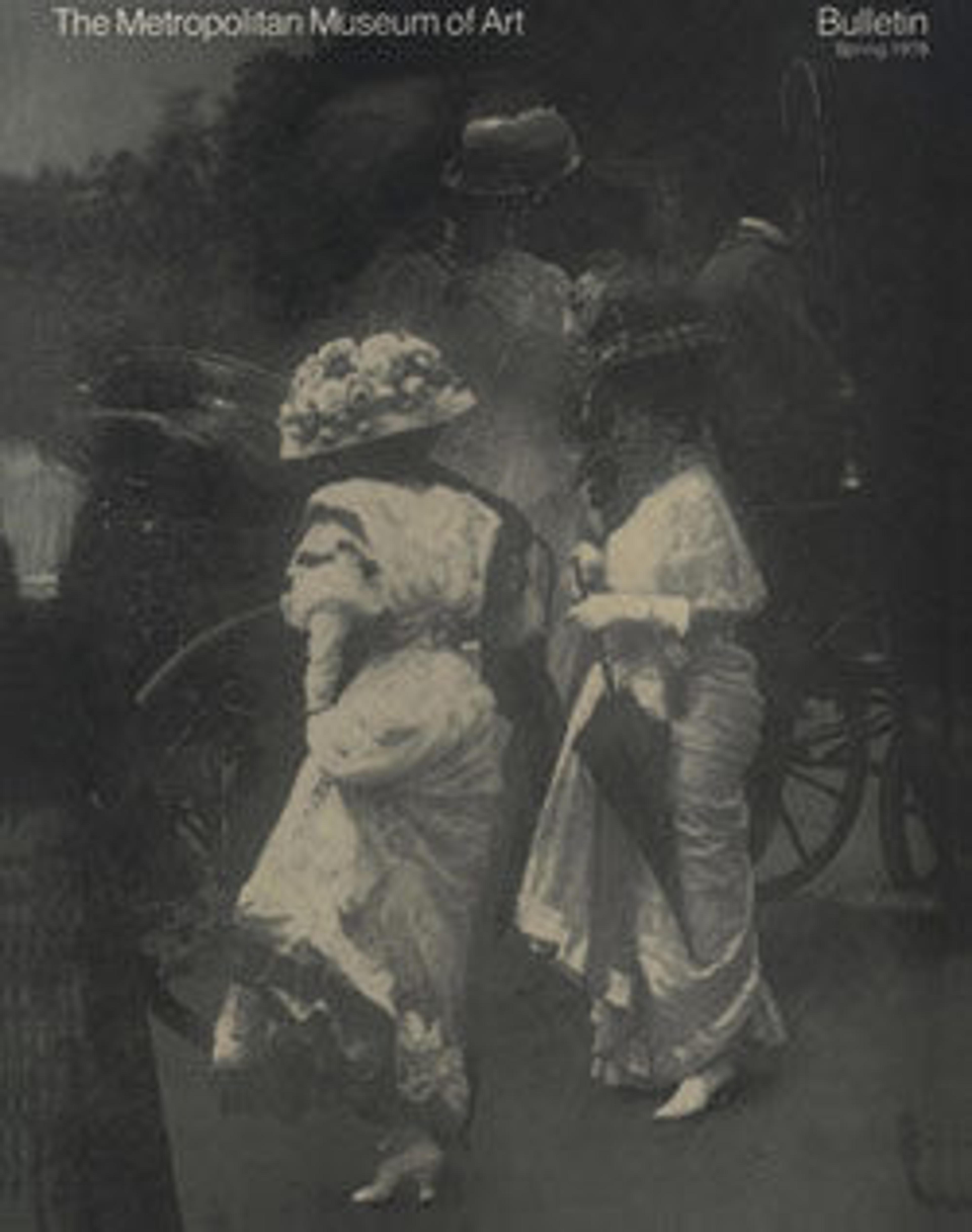[The Bubble]
Coburn was introduced to photography by his distant cousin F. Holland Day and was so talented and precocious a photographer that he soon gave instruction on platinum printing to Day himself. He traveled to London and Paris with Day to assist with the 1900–1901 exhibition "The New School of American Photography" and there met Edward Steichen, Frederick Evans, Frank Eugene, and other photographers. In 1907, the year he had a one-man show at Stieglitz’s gallery, Coburn was invited by the American art collector Charles Lang Freer to photograph his collection of Asian art and prints by Whistler. That exposure to Japanese art and Japonism is evident in this portrait of Elsie "Toodles" Thomas dressed in a kimono and looking like a figure in a ukiyo-e print. Thomas is shown blowing a quivering bubble, a longstanding symbol of the transient nature of life frequently used by Pictorialist photographers.
Artwork Details
- Title: [The Bubble]
- Artist: Alvin Langdon Coburn (British, Boston, Massachusetts 1882–1966 Wales)
- Date: ca. 1908
- Medium: Gum bichromate over platinum print
- Dimensions: Image: 28.3 x 21.9 cm (11 1/8 x 8 5/8 in.)
- Classification: Photographs
- Credit Line: Alfred Stieglitz Collection, 1933
- Object Number: 33.43.196
- Curatorial Department: Photographs
More Artwork
Research Resources
The Met provides unparalleled resources for research and welcomes an international community of students and scholars. The Met's Open Access API is where creators and researchers can connect to the The Met collection. Open Access data and public domain images are available for unrestricted commercial and noncommercial use without permission or fee.
To request images under copyright and other restrictions, please use this Image Request form.
Feedback
We continue to research and examine historical and cultural context for objects in The Met collection. If you have comments or questions about this object record, please contact us using the form below. The Museum looks forward to receiving your comments.
